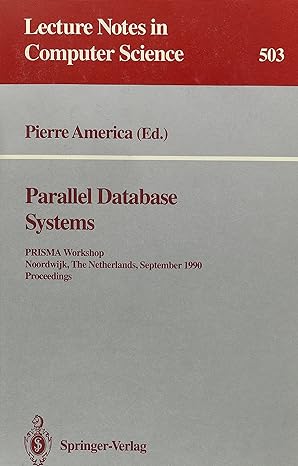Answered step by step
Verified Expert Solution
Question
1 Approved Answer
Need help filling in the areas, unsure of how to do the code, JAVA. I've highlited what needs completing. import java.util.* ; /** Program to
Need help filling in the areas, unsure of how to do the code, JAVA. I've highlited what needs completing.
import java.util.* ; /** Program to test the BankAccount class, where the BankAccount class is the BankAccount class but changed so that it is measurable. There are two "todo" regions in the BankAccount class -- both are necessary for making BankAccount implement Measurable. Fill them in. There is nothing to do in this tester class, so do not change it. */ public class BankAccountMeasurableTester { public static void main(String[] args) { DataSet dataSet = new DataSet() ; dataSet.add(new BankAccount(1000)) ; dataSet.add(new BankAccount(3000)) ; dataSet.add(new BankAccount(5000)) ; dataSet.add(new BankAccount(7000)) ; System.out.printf("The average bankAccount balance is %.1f ", dataSet.getAverage()) ; System.out.println("Expected: The average bankAccount balance is 4000.0") ; System.out.println("---------------") ; BankAccount maxBankAccount = null ; //-----------Start below here. To do: approximate lines of code = 1 // assign the maximum bankAccount to a maxBankAccount //-----------------End here. Please do not remove this comment. Reminder: no changes outside the todo regions. System.out.println("The maximum bankAccount is: " + maxBankAccount) ; System.out.println("Expected: The maximum bankAccount is: BankAccount[balance = 7000.0]") ; System.out.println("---------------") ; //An output without giving the "Expected" dataSet.add(new BankAccount(20000)) ; System.out.printf("The average bankAccount balance is %.1f ", dataSet.getAverage()) ; System.out.println("Expected not shown.") ; System.out.println("---------------") ; } } /** This BankAccount class is the same as the usual BankAccount class, except that it implements Measurable. A bank account has a balance that can be changed by deposits and withdrawals. */ //-----------Start below here. To do: approximate lines of code = 1 // Write the "public class ... " part so that Measurable is implemented, but do not say public, since only one class can be public in a file //-----------------End here. Please do not remove this comment. Reminder: no changes outside the todo regions. { //instance variables private double balance; //the money in the account /** Constructs a bank account with a zero balance. */ public BankAccount() { balance = 0; } /** Constructs a bank account with a given balance. @param aBalance the initial balance */ public BankAccount(double aBalance) { balance = aBalance; } /** Deposits money into the bank account. @param amount the amount to deposit */ public void deposit(double amount) { double newBalance = balance + amount; balance = newBalance; } /** Withdraws money from the bank account. @param amount the amount to withdraw */ public void withdraw(double amount) { double newBalance = balance - amount; balance = newBalance; } /** Gets the current balance of the bank account. @return the current balance */ public double getBalance() { return balance; } /** Gives a string representation of the bankaccount, but in this case the string is just the balance. @return the balance as a string */ public String toString() { return "BankAccount[balance = " + balance + "]" ; } /** Gets the measure in the way required by the interface @return the balance as a measure of the bank account */ //-----------Start below here. To do: approximate lines of code = 2 // 1. public signature //2. return the measure //-----------------End here. Please do not remove this comment. Reminder: no changes outside the todo regions. } /** DataSet example from Chap. 6 of Horstmann, Big Java modified in 9.1 to use Measurable interface */ class DataSet { private double sum ; private int count ; private Measurable max ; /** Constructs DataSet object empty. */ public DataSet() { sum = 0 ; count = 0 ; max = null ; } /** Adds an element to the dataset @param x the thing to add */ public void add(Measurable x) { sum += x.getMeasure() ; if (count == 0 || max.getMeasure() < x.getMeasure()) max = x ; count ++ ; } /** Returns the maximum or null if none @return the max */ public Measurable getMax() { return max ; } /** Returns the average @return the average or zero if none */ public double getAverage() { if (count == 0) return 0 ; else return sum / count ; } } /** An interface used as an example in Big Java. A class that implements this interface has a way to measure it, namely the getMeasure method. */ interface Measurable { double getMeasure() ; } Step by Step Solution
There are 3 Steps involved in it
Step: 1

Get Instant Access to Expert-Tailored Solutions
See step-by-step solutions with expert insights and AI powered tools for academic success
Step: 2

Step: 3

Ace Your Homework with AI
Get the answers you need in no time with our AI-driven, step-by-step assistance
Get Started


